
One of the things I’m thankful for during this covid crisis is having a small yard with a variety of fruit trees. If you’re smart about the types and varieties of fruit trees you plant, you can maximize the amount of time during the year that you’re likely to have fruit. Here in California, if you have enough space, you can have fruit year round.
The handy chart above from Dave Wilson nursery (head here for a downloadable version) can be used as a guide to planting for year round food resiliency. Results may vary. Due to a high squirrel population stone fruit doesn’t work well in our yard. But at least I have avocados and the olives I started curing back in October are now ready to eat. In August we’ll have figs and in September more pomegranates than we could possible eat. If the squirrels don’t take them all we might have some apples too.

This chart from the Maddock Nursery in Fallbrook shows avocado and citrus harvest times. If you’re lucky enough to live in an avocado friendly climate and have space for four trees it’s possible to pick varieties that will be ready to harvest year round. That’s a lot of guacamole. Even with one avocado tree, as we have, you can leave the avocados on the tree and harvest as needed (they don’t ripen on the tree). Our Fuerte gives us several months of avocado toast.
Growing fruit takes knowledge and effort. Thankfully, we have a great resource in UC Davis’ guide to backyard orchards. My advice: talk to avid gardeners in your area to learn what grows best. Pay attention to irrigation and pruning. Take out under-performing trees. Buy bare root trees to save money.
If you don’t have a yard perhaps a school, business or faith institution in your community could be convinced to plant a small orchard. One of the many lessons of this crisis is that we need to work on local food resiliency and not depend so much on long supply chains.
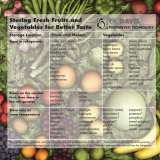
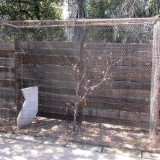
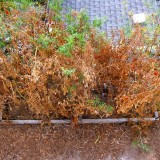
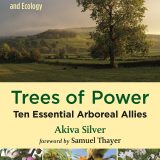
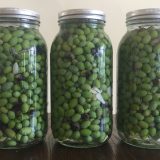
We moved to a new place a few years ago and have begun to steadily add trees that produce food. Most of them are native to our location — zone 5 Mid-Michigan — including Serviceberry, PawPaw, Persimmon, Hazelnut, Cherry, Butternut, Elderberry, Wild Plums, Spicebush, Nodding onion, etc. and we’re also adding traditional fruit trees and shrubs (Pears, Apples, Blueberries, Raspberries, Rhubarb, Strawberry -wild, alpine and cultivated varieties), plus plenty of native plants that also have food or medicinal uses.
Much of these are going to be ‘habitat’; not necessarily for food production, but can be used that way if need be, depending on how intensively we tend them, with the obviously cultivated plants located closest to our house, so we can manage them (and keep any pests at bay).
If your readers are in the Ohio river valley of the Midwest, they should check out Indigeneous Landscapes — they have a website and active FB page and support Native Plant Agriculture that supports ecology and can be cultivated as a food source. Pretty great way to make our home beautiful and useful for all the beings that live here!
I’m on Team Shrub. Here on the rainy side of Cascadia, they are just way less easy to eff up. My brief foray into attempting to grow fruit trees here did not work out…. I have four kinds of currants, raspberries, and an endless supply of blackberries (shoot me). I also have goumi as a nitrogen fixer but haven’t quite figured out how to work with the very astringent berries. I just added several western serviceberry bushes. We’re going to be moving to a new property in the next couple of years, where I’ll add all of the above as well as blueberries.
I love the idea of “team shrub.”
I saw a post from many years ago regarding squirrels and your peach tree. Have you had any luck with keeping them away?
I’ve heard good things about organza bags. They are mesh like bags.
Clemson University also has fruit bags.
The disadvantage of these bags are you have to cover each fruit.
I’ve also had some luck with the “bird repellent tape.” It’s the highly reflective strip of tape that you hang on your tree or on stakes around your tree.